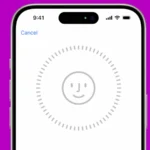Emergency services exist to help during life-threatening situations, providing immediate assistance when seconds count. To reach emergency services in the United States, dial 911 from any phone to connect with police, fire department, or ambulance services.
Modern emergency call systems use Enhanced 911 (E911) technology to pinpoint caller locations, even from VoIP services. This technology helps dispatchers send help faster and more accurately to people in need.
The process starts with a trained call-taker who will ask specific questions about the emergency location, phone number, and situation details. These questions are essential for sending the right emergency responders with the proper equipment.
iPhone Emergency Services Guide
Your iPhone has built-in features designed to help you quickly contact emergency services and share critical information when you need help. This guide explains how to use these features effectively.
1. Emergency SOS: Quickly Call for Help
Emergency SOS lets you call emergency services immediately and alert your emergency contacts.
How to Use Emergency SOS:
- iPhone 8 or later:
- Press and hold the side button and either volume button until the Emergency SOS slider appears.
- Drag the slider to call emergency services.
- Or keep holding the buttons to automatically call emergency services after a countdown.
- iPhone 7 or earlier:
- Rapidly press the side (or top) button five times.
- The Emergency SOS slider appears; drag it to call.
What Happens During an Emergency SOS Call?
- Your iPhone calls local emergency services.
- Your iPhone sends your current location to your emergency contacts (if set up).
- If you have Medical ID set up, it can be accessed by first responders from your lock screen.
2. Set Up Emergency Contacts and Medical ID
Medical ID
- Open the Health app.
- Tap your profile picture > Medical ID > Edit.
- Enter important medical information (allergies, conditions, blood type).
- Add emergency contacts who will be notified during an SOS call.
- Enable Show When Locked so first responders can access your Medical ID without unlocking your phone.
Emergency Contacts
- Emergency contacts receive a message with your location when you use Emergency SOS.
- They also get updates if your location changes.
3. Crash Detection (iPhone 14 and Later)
Your iPhone can detect severe car crashes.
- If a crash is detected, your iPhone sounds an alarm and shows an alert.
- If you don’t respond within 10 seconds, it automatically calls emergency services and shares your location.
4. Text 911 (Where Available)
- In supported regions, you can text 911 from your iPhone if calling isn’t safe or possible.
- Simply open Messages, enter “911” as the recipient, type your emergency, and send.
- On iPhone 14 or later, you can text 911 via satellite when out of cellular and Wi-Fi coverage.
5. Emergency SOS via Satellite (iPhone 14 and Later)
- When you’re off the grid without cellular or Wi-Fi, your iPhone 14+ can connect to emergency services via satellite.
- This lets you send text messages to emergency responders.
- Follow on-screen prompts to connect to a satellite and send your message.
6. Additional Safety Features
- Fall Detection (Apple Watch): Detects hard falls and can call emergency services if you don’t respond.
- Location Sharing: Your iPhone can share your location with emergency contacts during emergencies.
- Safety Check: Helps manage who has access to your location and information.
Tips for Using Emergency Services on iPhone
- Test Emergency SOS only when necessary; false calls can tie up emergency resources.
- Keep your emergency contacts and Medical ID info up to date.
- Learn your local emergency number, as it may vary by country.
- If you’re in a dangerous situation, use text 911 if available instead of calling.
Summary
Your iPhone is equipped with powerful emergency features like Emergency SOS, Medical ID, Crash Detection, and satellite connectivity to help you get help quickly and share vital information. Setting up these features ahead of time can save precious moments during emergencies.
Sources:
- Apple Support: Use SOS to contact emergency services on your iPhone
- Apple Support: Use Crash Detection on iPhone or Apple Watch
- Apple Support: Text 911 on iPhone or Apple Watch
- Apple Support: Set up your Medical ID in the Health app
- Apple Support: Use Emergency SOS via satellite on your iPhone
Key Takeaways
- Emergency services can be reached by dialing 911, 999, or 112 in most countries worldwide
- Modern systems use E911 technology to automatically locate callers during emergencies
- Call-takers need specific details to dispatch appropriate emergency response teams quickly
Understanding Emergency Services
Emergency services form a coordinated system of rapid response teams that protect public safety through immediate action during crises. These services save lives through quick reactions and skilled assistance.
Types of Emergencies and Appropriate Responses
Medical emergencies require immediate attention when someone faces life-threatening conditions. Call 911 for heart attacks, severe bleeding, difficulty breathing, or sudden loss of consciousness.
Fire emergencies need rapid evacuation and professional firefighter response. Smoke, visible flames, or gas leaks demand instant 911 contact.
Crime-related emergencies include active threats, break-ins, or violence. Contact 911 immediately if witnessing a crime or facing immediate danger.
Natural disasters like floods, earthquakes, or tornados often need coordinated emergency response. Follow official instructions and call 911 for immediate threats to safety.
Key Entities in Emergency Response
Police officers typically arrive first to secure the scene and assess the situation. They manage public safety and coordinate with other responders.
Fire departments handle fires, rescues, and hazardous materials. Equipment includes:
- Fire trucks
- Rescue vehicles
- Specialized tools
- Safety gear
Ambulance services provide immediate medical care. Paramedics and EMTs offer:
- Life support
- Injury treatment
- Patient transport
- Critical care
911 dispatchers coordinate all emergency services. They gather essential information and guide callers through critical first steps while help arrives.
Frequently Asked Questions
Emergency services communication protocols require specific knowledge for effective use during critical situations. Proper procedures and alternative contact methods exist to ensure everyone can access help when needed.
How can I contact 911 online?
Text-to-911 services operate in select areas across the United States. This service allows people to send SMS messages to emergency services.
The service helps those who cannot make voice calls or are in situations where speaking would put them in danger.
What are the steps to call emergency services on an iPhone?
Press and hold the side button and either volume button until the Emergency SOS slider appears. Drag the slider to call emergency services.
iPhone users can also rapidly press the side button five times to initiate an emergency call.
What should I expect after dialing 911 for a medical emergency?
The dispatcher will ask for the location, phone number, and nature of the emergency. These questions help send the right response team.
Stay on the line until instructed otherwise. The dispatcher may provide first aid instructions while help is on the way.
In what scenarios is it inappropriate to call 911?
Non-emergency situations like power outages, minor injuries, or general questions do not warrant 911 calls.
Misuse of 911 can block legitimate emergency calls from reaching dispatchers.
Local non-emergency numbers exist for police and fire department inquiries that do not require immediate response.
Are there any alternative methods to reach 911 without a traditional phone?
TTY devices allow deaf and hard-of-hearing individuals to communicate with emergency services.
Voice-over-IP services support emergency calls through internet connections.
Many modern smartwatches include emergency calling features.
What are the critical steps to take when contacting emergency services?
Stay calm and speak clearly when describing the emergency situation. Provide the exact location with street address and landmarks.
Listen carefully to the dispatcher’s questions and follow their instructions precisely.
Keep the phone line clear after the call in case emergency services need to contact you again.







